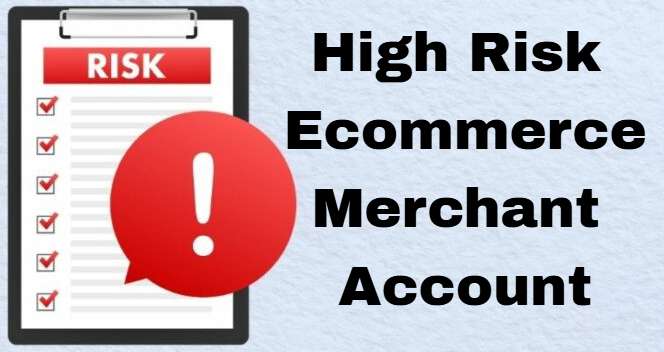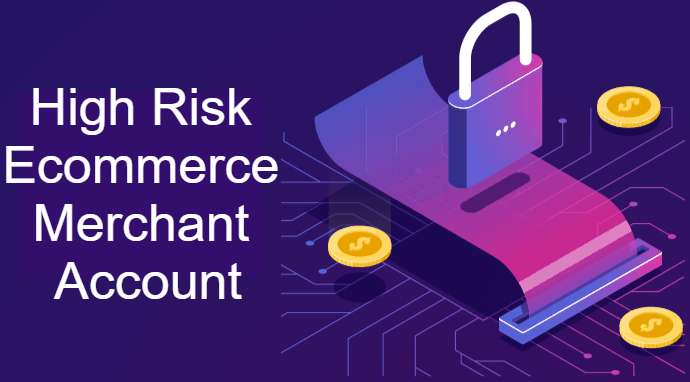AUTHOR : ISTELLA ISSO
DATE : 22/11/23
Introduction

The payment gateway landscape is constantly evolving, driven by technological advancements, consumer behavior shifts, and the growing need for enhanced security. As the global ecommerce market[1] continues to expand, merchants are increasingly seeking payment solutions that are reliable, secure, and efficient. This is especially true for businesses that operate in high-risk industries, which often face challenges when selecting a payment gateway. In this article, we’ll explore the latest trends in payment gateways, with a particular focus on High Risk Ecommerce Merchant Accounts[2].
The Rise of Digital and Cryptocurrencies in Payment Gateways
As cryptocurrencies and digital assets continue to gain popularity, they are increasingly being integrated into payment gateways. More businesses are accepting payments in Bitcoin, Ethereum, and other digital currencies[3] due to the lower transaction fees, faster cross-border transactions, and the anonymity they provide. This trend is particularly important for high-risk ecommerce merchants, who may face higher fees and more scrutiny from traditional financial institutions.
For high-risk ecommerce merchant accounts[4], the integration of cryptocurrencies could offer a way to bypass traditional banking systems and mitigate some of the financial obstacles associated with their industry. By offering multiple payment options, merchants can expand their customer base and appeal to tech-savvy buyers who prefer decentralized currencies.
Artificial Intelligence (AI) and Machine Learning in Payment Gateways
AI and machine learning are making significant strides in the payment gateway industry. These technologies help identify fraudulent transactions, predict customer behavior, and enhance the overall customer experience. For high-risk ecommerce merchants[5], AI-driven fraud prevention tools are a crucial asset. These tools can assess transaction patterns in real-time, flagging any anomalies that may suggest fraudulent activity, and reducing chargebacks, which are a common issue for high-risk businesses.

Machine learning algorithms also optimize payment processing by learning from past transaction data to predict the most efficient payment routes and methods. This helps speed up the payment process, minimize downtime, and improve customer satisfaction.
Contactless Payments and NFC Technology
In 2024, contactless payments are becoming the norm rather than the exception. The convenience and speed offered by NFC (Near Field Communication) technology have made it a popular choice for consumers. With a simple tap of their card or mobile phone, customers can complete transactions securely and quickly.
For high-risk ecommerce merchants, embracing contactless payments can provide an edge, as consumers increasingly demand seamless and frictionless payment experiences. Payment gateways that support NFC technology can enhance customer satisfaction, reduce abandoned transactions, and improve conversion rates. Additionally, the enhanced security features, such as tokenization and encryption, make contactless payments a secure option for both merchants and consumers.
Mobile Payment Integration and Optimization
Mobile payments are another growing trend in the payment gateway industry. With the rise of smartphones and mobile wallets like Apple Pay, Google Pay, and Samsung Pay, consumers are more likely than ever to make purchases directly from their mobile devices. Payment gateways that integrate with mobile wallets provide a seamless and secure checkout experience for customers, which is essential for ecommerce merchants.
For high-risk ecommerce merchant accounts, optimizing mobile payment options can help streamline the checkout process and increase conversion rates. Many high-risk businesses, such as those in the gaming, adult content, or subscription-based industries, benefit from mobile payment integrations, which provide customers with convenient and fast payment methods that help improve sales.
Biometric Authentication for Enhanced Security
As cyber threats become more sophisticated, payment gateways are increasingly adopting biometric authentication methods, such as fingerprint recognition, facial recognition, and voice recognition. These methods provide an added layer of security, reducing the risk of fraudulent transactions and identity theft.
For high-risk ecommerce merchants, ensuring secure transactions is essential. Biometric authentication offers a way to verify customers’ identities without relying solely on passwords or PIN codes, which are often vulnerable to theft. As consumers become more concerned about the safety of their personal information, merchants who adopt biometric authentication are likely to see higher levels of trust and loyalty from their customer base.
Subscription Billing and Recurring Payments
Subscription-based ecommerce models are on the rise, with more businesses offering subscription services for products or content. Payment gateways that support subscription billing and recurring payments have become essential for merchants in industries such as SaaS (Software as a Service), media streaming, and health and wellness. These models offer consistent revenue streams and customer retention.
For high-risk ecommerce merchant accounts, handling recurring billing can be particularly challenging due to chargebacks and fraud concerns. Fortunately, modern payment gateways now offer sophisticated tools to manage these challenges, including fraud detection and secure billing protocols.
The Shift Towards Global Payment Solutions
As ecommerce continues to break down geographical barriers, businesses are increasingly looking for payment gateways that can support cross-border transactions. Consumers are shopping globally, and they expect a wide range of payment options in their local currencies. To stay competitive, ecommerce merchants must adopt payment gateways that support international payments, multiple currencies, and global payment methods.

For high-risk ecommerce merchant accounts, the ability to accept payments from customers worldwide is crucial. High-risk merchants, particularly those in industries with complex regulatory environments, may face difficulties when dealing with cross-border payments. However, payment gateways designed to handle international transactions can help simplify this process by providing compliance support, reducing exchange rate issues, and streamlining global payment acceptance.
Instant Payments and Real-Time Settlements
Instant payment solutions are gaining traction in the ecommerce space, allowing businesses to receive funds in real-time or within a few hours after a transaction is completed. This is a game-changer for high-risk ecommerce merchants, who often face delayed settlement times due to the nature of their business.
Payment gateways that offer real-time settlement options can help high-risk merchants maintain cash flow and improve operational efficiency. Instant payments can also reduce the risk of chargebacks, as transactions are completed and settled before potential disputes arise.
Enhanced Data Security with Tokenization
Data breaches and security concerns continue to be major challenges for ecommerce businesses. Payment gateways are increasingly adopting tokenization to protect sensitive payment data. Tokenization replaces credit card details with a unique identifier, or token, making it impossible for hackers to gain access to the original card information.
For high-risk ecommerce merchants, tokenization is an essential security feature. By using tokenization, these businesses can protect their customers’ data and reduce the risk of fraud, chargebacks, and compliance issues with regulations like PCI DSS.
Conclusion
The payment gateway industry is evolving rapidly, with new technologies and trends reshaping how businesses accept payments. For high-risk ecommerce merchants, staying ahead of these trends is essential to ensuring secure, seamless, and efficient payment processing. By adopting advanced payment solutions, such as AI-driven fraud prevention, cryptocurrency acceptance, and tokenization, high-risk merchants can reduce their risks and provide a better experience for their customers.
FAQs
1. What is a High Risk Ecommerce Merchant Account?
A high-risk ecommerce merchant account is a specialized payment processing account designed for businesses that operate in industries deemed high-risk by financial institutions.
2. Why are High Risk Ecommerce Merchant Accounts Important?
These accounts are crucial for businesses that operate in high-risk sectors because they offer access to payment processing solutions that are tailored to mitigate the unique challenges these businesses face.
3. How Can Payment Gateways Help High Risk Ecommerce Merchants?
Payment gateways designed for high-risk ecommerce merchants provide advanced fraud prevention tools, flexible payment options, and compliance support.
4. Can a High Risk Ecommerce Merchant Accept Cryptocurrency Payments?
Yes, many payment gateways now support cryptocurrency payments, allowing high-risk ecommerce merchants to accept Bitcoin, Ethereum, and other digital currencies.
5. How Do AI and Machine Learning Benefit High Risk Ecommerce Merchants?
AI and machine learning technologies help high-risk ecommerce merchants detect fraudulent transactions, optimize payment routing, and improve customer experiences by analyzing transaction patterns and flagging suspicious activities.





